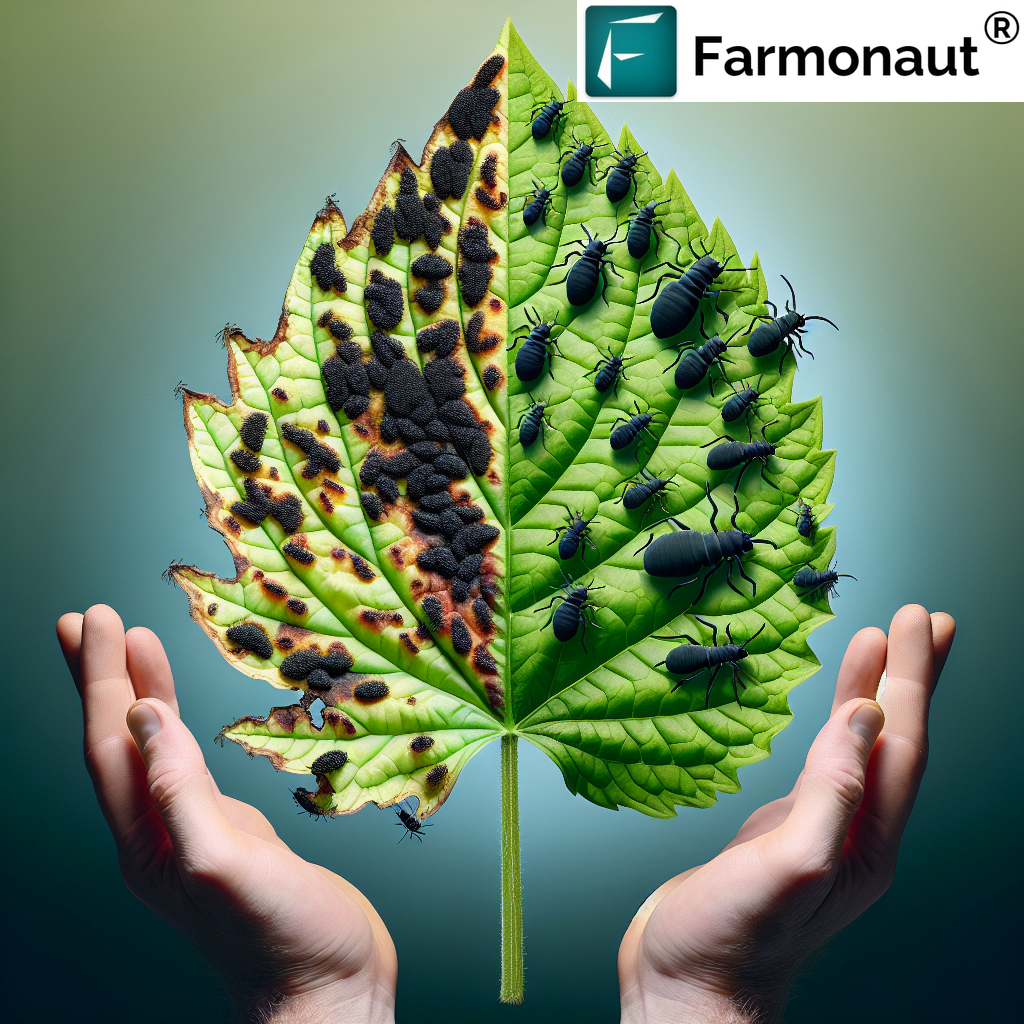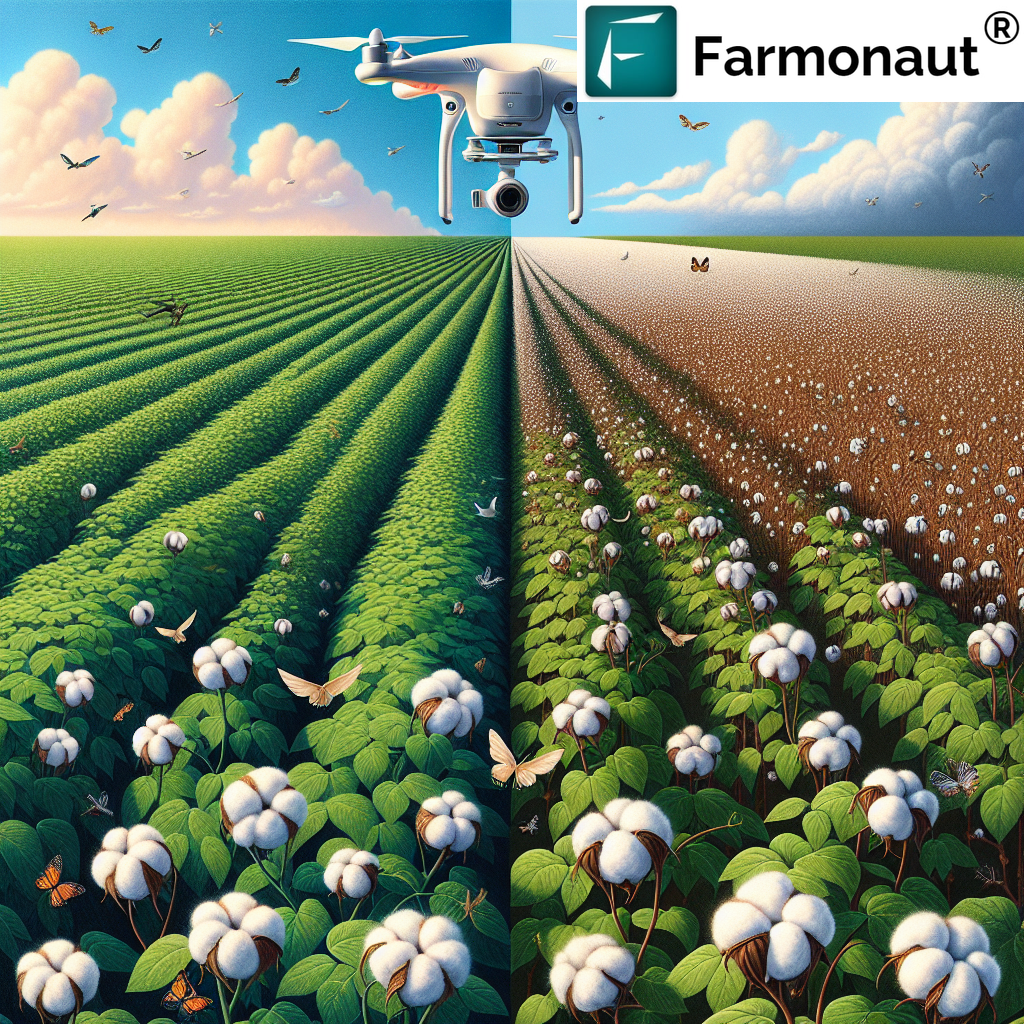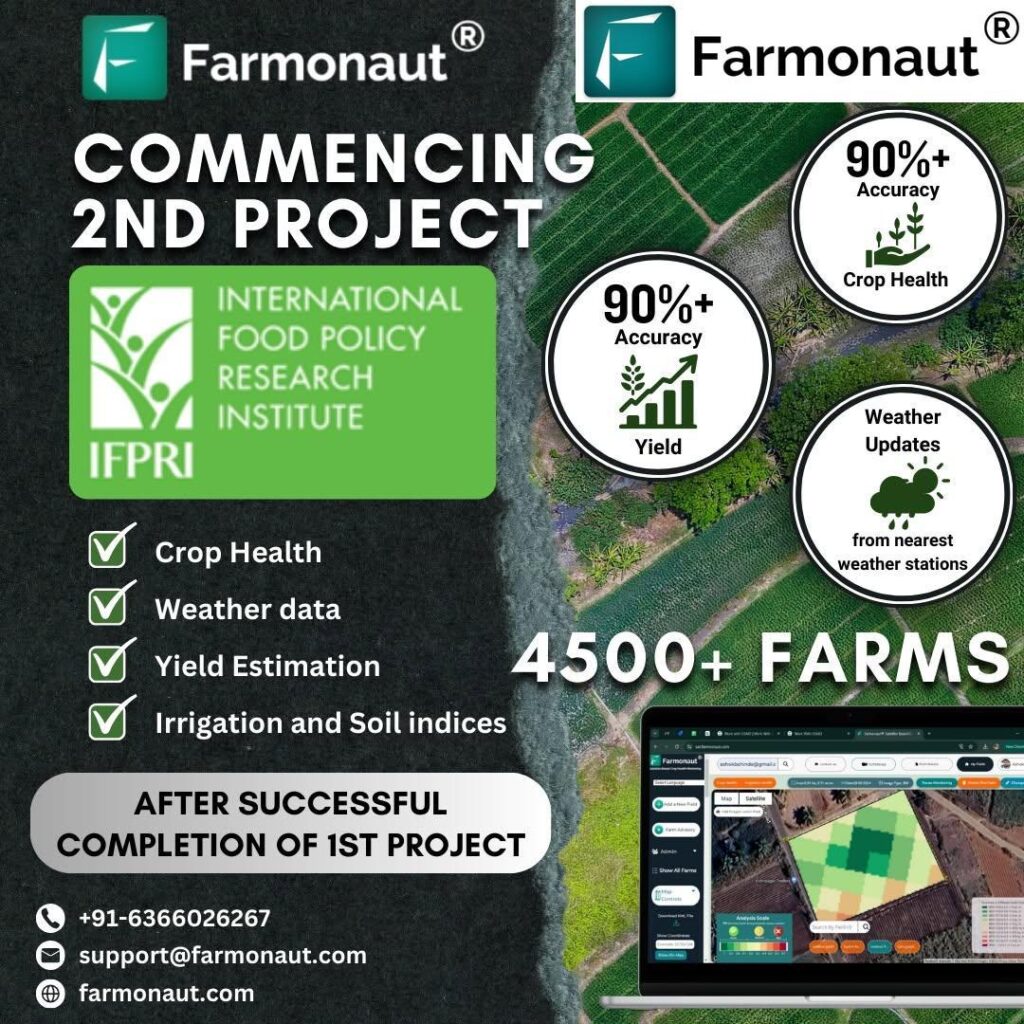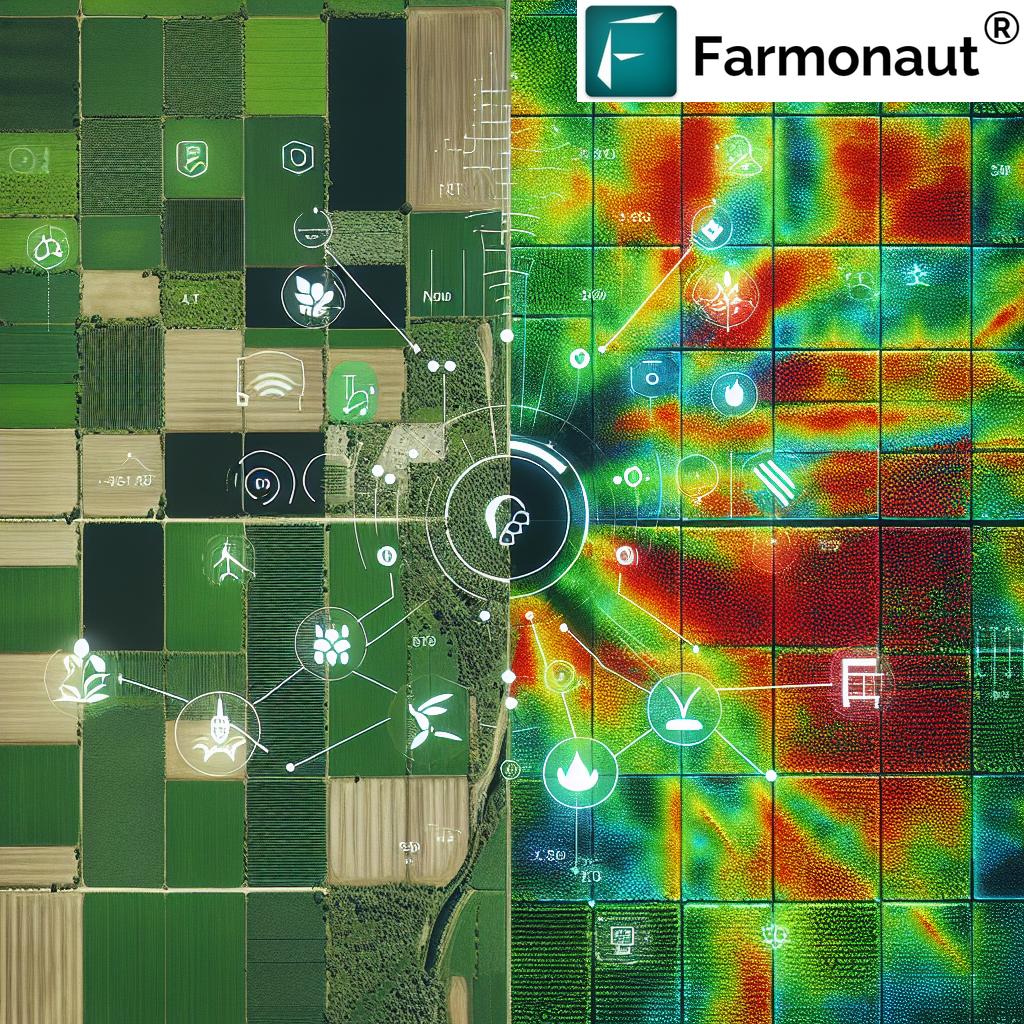Combating Pink Bollworms: Essential Strategies for Cotton Farmers

As agricultural technology experts at Farmonaut, we understand the critical challenges faced by cotton farmers worldwide. One of the most persistent and destructive pests in cotton cultivation is the pink bollworm (Pectinophora gossypiella). In this comprehensive guide, we’ll explore the nature of this pest, its impact on cotton crops, and the most effective strategies for managing and controlling pink bollworm infestations. We’ll also discuss how modern agricultural technologies, including our satellite-based monitoring systems, can play a crucial role in protecting cotton crops from these devastating insects.
Understanding Pink Bollworms: A Major Threat to Cotton Production
Pink bollworms are a species of moth that pose a significant threat to cotton crops globally. These pests are particularly problematic due to their ability to rapidly reproduce and cause extensive damage to cotton bolls. Let’s delve into the key characteristics of pink bollworms and why they’re such a formidable foe for cotton farmers:
- Life Cycle: Pink bollworms have a complex life cycle that includes egg, larval, pupal, and adult stages. Understanding this cycle is crucial for effective pest management.
- Feeding Habits: The larvae of pink bollworms feed on cotton seeds within the bolls, causing significant damage to the crop quality and yield.
- Rapid Reproduction: Female moths can lay up to 200 eggs in their lifetime, leading to quick population growth and potential for widespread infestation.
- Resistance to Pesticides: Over time, pink bollworms have developed resistance to many conventional pesticides, making control measures increasingly challenging.
The Economic Impact of Pink Bollworm Infestations
The damage caused by pink bollworms extends far beyond the immediate crop loss. Let’s examine the broader economic implications of these infestations:
- Reduced Yield: Infested cotton bolls often result in lower yields, directly impacting farmers’ income.
- Quality Degradation: Pink bollworm damage can significantly reduce the quality of cotton fibers, leading to lower market prices for the harvested crop.
- Increased Production Costs: Farmers often need to invest in additional pest control measures, increasing overall production costs.
- Market Restrictions: Some countries impose strict regulations on cotton imports from regions known for pink bollworm infestations, potentially limiting market access for affected farmers.
Innovative Strategies for Pink Bollworm Management
At Farmonaut, we believe in integrating cutting-edge technology with traditional farming practices to combat agricultural challenges effectively. Here are some innovative strategies we recommend for managing pink bollworm infestations:
1. Satellite-Based Crop Monitoring
Our satellite-based crop health monitoring system at Farmonaut plays a crucial role in early detection and management of pink bollworm infestations. Here’s how it works:
- Real-Time Vegetation Health Tracking: Our system uses multispectral satellite imagery to monitor crop health, allowing for early detection of stress signs that could indicate pest infestations.
- AI-Powered Analysis: Our advanced algorithms analyze satellite data to identify patterns consistent with pink bollworm damage, enabling proactive intervention.
- Precision Agriculture: By providing detailed, field-level insights, our technology enables farmers to implement targeted pest control measures, reducing overall pesticide use and costs.
To learn more about our satellite-based monitoring system, visit Farmonaut’s App.
2. Integrated Pest Management (IPM)
Integrated Pest Management is a holistic approach to pest control that combines various strategies to minimize crop damage while reducing reliance on chemical pesticides. Key components of IPM for pink bollworm control include:
- Cultural Control: Implementing practices such as crop rotation, early planting, and thorough post-harvest clean-up to disrupt the pest’s life cycle.
- Biological Control: Utilizing natural predators and parasitoids of pink bollworms to keep populations in check.
- Pheromone Traps: Using traps baited with synthetic pheromones to monitor and disrupt pink bollworm mating patterns.
- Selective Pesticide Use: When necessary, applying pesticides in a targeted manner based on pest population thresholds and crop growth stages.
3. Genetically Modified (GM) Cotton Varieties
The development of Bt cotton, genetically modified to produce insecticidal proteins, has been a game-changer in pink bollworm management. However, it’s important to note:
- While Bt cotton has been effective, some regions have reported instances of pink bollworms developing resistance to Bt toxins.
- Proper management practices, including refuge planting, are crucial to maintain the long-term effectiveness of Bt cotton.
4. Advanced Monitoring and Forecasting
At Farmonaut, we’ve developed sophisticated tools for monitoring and forecasting pest populations:
- Jeevn AI Advisory System: Our AI-driven system provides personalized recommendations for pest management based on real-time crop data and historical pest patterns.
- Weather Integration: By incorporating weather data into our pest forecasting models, we help farmers anticipate potential outbreaks and take preventive measures.
Explore our advanced monitoring capabilities through the Farmonaut API.
The Role of Technology in Pink Bollworm Management
Modern agricultural technologies are revolutionizing the way farmers approach pest management, including the control of pink bollworms. Here’s how technology is making a difference:
1. Precision Application of Pesticides
Using data from our satellite monitoring system, farmers can apply pesticides with unprecedented precision:
- Targeted application to affected areas, reducing overall pesticide use
- Optimized timing of applications based on pest life cycles and weather conditions
- Reduced environmental impact and lower costs for farmers
2. Data-Driven Decision Making
Our Jeevn AI Advisory System empowers farmers with data-driven insights:
- Personalized recommendations based on field-specific data
- Historical analysis of pest patterns to predict future outbreaks
- Integration of multiple data sources for comprehensive pest management strategies
3. Early Warning Systems
Farmonaut’s technology serves as an early warning system for pink bollworm infestations:
- Real-time alerts when satellite imagery detects signs of infestation
- Automated notifications sent directly to farmers’ mobile devices
- Ability to quickly mobilize resources for timely intervention
Download our mobile app for real-time alerts and insights:
Best Practices for Pink Bollworm Control
Based on our experience and research, we recommend the following best practices for effective pink bollworm management:
- Regular Monitoring: Implement a rigorous scouting program to detect early signs of infestation.
- Timely Planting and Harvesting: Adjust planting and harvesting times to disrupt the pest’s life cycle.
- Crop Rotation: Rotate cotton with non-host crops to break the pest’s reproductive cycle.
- Proper Sanitation: Thoroughly clean fields after harvest to eliminate overwintering sites for pink bollworms.
- Judicious Use of Insecticides: Apply insecticides only when necessary and in accordance with integrated pest management principles.
- Resistance Management: Implement strategies to prevent the development of pesticide resistance in pink bollworm populations.
- Adoption of Technology: Utilize advanced technologies like Farmonaut’s satellite monitoring system for improved pest management.
The Future of Pink Bollworm Control
As we look to the future, several promising developments are on the horizon for pink bollworm management:
- Advanced Genetic Engineering: Development of new GM cotton varieties with enhanced resistance to pink bollworms.
- Improved Biological Control Agents: Research into more effective natural predators and parasitoids of pink bollworms.
- Nanotechnology: Exploration of nanoparticle-based pesticides for more targeted and efficient pest control.
- AI and Machine Learning: Further advancements in predictive modeling and automated pest detection systems.
How Farmonaut’s Satellite System Compares to Drone and IoT-Based Farm Monitoring
| Feature | Farmonaut Satellite System | Drone-Based Monitoring | IoT-Based Monitoring |
|---|---|---|---|
| Coverage Area | Large scale (thousands of hectares) | Limited (tens of hectares per flight) | Limited to sensor placement |
| Frequency of Data Collection | Regular (every few days) | On-demand (requires manual flights) | Continuous |
| Initial Setup Cost | Low | High (drone purchase, training) | Moderate to High (sensor network setup) |
| Operational Complexity | Low (automated data collection) | High (requires skilled operators) | Moderate (maintenance of sensor network) |
| Data Processing | Automated (AI-driven analysis) | Manual or semi-automated | Automated |
| Weather Dependency | Low (can penetrate clouds) | High (affected by wind, rain) | Low |
| Scalability | Highly scalable | Limited by operational capacity | Scalable but requires additional hardware |
Conclusion: A Holistic Approach to Pink Bollworm Management
Effectively managing pink bollworms in cotton crops requires a multi-faceted approach that combines traditional agricultural practices with cutting-edge technology. At Farmonaut, we’re committed to providing farmers with the tools and insights they need to combat this persistent pest efficiently and sustainably.
By leveraging our satellite-based monitoring system, AI-powered advisory services, and integrated pest management strategies, cotton farmers can significantly reduce the impact of pink bollworms on their crops. This not only leads to improved yields and quality but also contributes to more sustainable and environmentally friendly farming practices.
We encourage cotton farmers to explore the full range of our services and to integrate these advanced technologies into their pest management strategies. Together, we can work towards a future where pink bollworms no longer pose a significant threat to cotton production worldwide.
FAQs about Pink Bollworm Management
- Q: How can I identify a pink bollworm infestation in my cotton field?
A: Look for small, round holes in cotton bolls, presence of pink-colored larvae inside the bolls, and premature opening of bolls. Our satellite monitoring system can also detect early signs of stress in cotton plants that may indicate an infestation. - Q: Are there any natural predators of pink bollworms?
A: Yes, several natural predators can help control pink bollworm populations, including parasitic wasps, ants, and birds. Encouraging biodiversity in and around cotton fields can support these natural control mechanisms. - Q: How effective is Bt cotton against pink bollworms?
A: Bt cotton has been highly effective in controlling pink bollworms in many regions. However, cases of resistance have been reported, highlighting the importance of proper management practices and integrated pest control strategies. - Q: Can pink bollworms be completely eradicated from a cotton field?
A: Complete eradication is challenging, but with consistent and comprehensive management strategies, including the use of technology like our satellite monitoring system, pink bollworm populations can be effectively controlled to minimize crop damage. - Q: How often should I monitor my cotton fields for pink bollworms?
A: Regular monitoring is crucial, especially during the flowering and boll formation stages. Our satellite monitoring system provides continuous oversight, but we also recommend weekly physical inspections of your fields.
For more information on how Farmonaut can help you manage pink bollworms and other agricultural challenges, visit our API documentation or contact our support team.
Subscribe to Farmonaut Services
Ready to take your cotton farming to the next level? Subscribe to Farmonaut’s advanced agricultural monitoring services:
By subscribing to our services, you’ll gain access to cutting-edge satellite monitoring, AI-powered insights, and expert support to help you effectively manage pink bollworms and optimize your cotton production. Join the Farmonaut community today and transform the way you farm!














